William Davis's Blog: Dr. Davis Infinite Health Blog, page 150
October 20, 2014
Blood Sugar: Tool at Your Fingertips
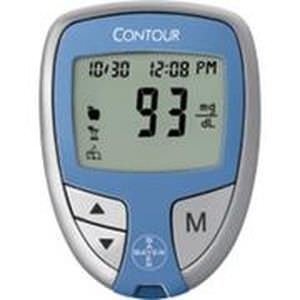 Here is an excerpt from Wheat Belly Total Health that discusses how to use a glucose meter to accelerate weight loss. The same strategy can be used to reverse type 2 diabetes as much as possible in as short a time as possible. (Taken from Chapter 7: Grainless Living Day-to-Day.)
Here is an excerpt from Wheat Belly Total Health that discusses how to use a glucose meter to accelerate weight loss. The same strategy can be used to reverse type 2 diabetes as much as possible in as short a time as possible. (Taken from Chapter 7: Grainless Living Day-to-Day.)
A blood sugar meter used pre- and post-meal can be a very powerful tool for weight loss and the reversal of metabolic distortions like high blood sugar. But you have to know how to apply the information.
Many people are frightened at the prospect of getting their blood checked for anything, and are particularly frightened by the prospect of checking it themselves. They’re frightened that it could be painful or expensive, or that it would make them feel like they have diabetes. As diabetics and anyone else comfortable with checking blood sugars will attest, the process is easy. It is not painful, as the devices used to prick the finger are spring-loaded and cause minimal discomfort. And costs are modest, especially if you obtain a device and test strips from your physician who will often just given them to you. (The device manufacturers give them away to physicians, since their money is made on the repeat sales of test strips.) If worse comes to worst, you might have to shell out the equivalent of the cost of a nice dinner at a restaurant to have a glucose meter and test strips for glucose and ketones (if desired; discussed below).
There are a number of devices that can test your blood sugar. I’ve had good experiences with the OneTouch Ultra, Accu-Chek Aviva, Bayer Contour, and ReliOn brands. The Precision Xtra tests for both glucose and ketones, using different test strips for each. Instructions are provided with each device, and it will take about 15 minutes to get any of these up and running. Once you get comfortable with the process, it requires just 1 to 2 minutes to obtain a blood sugar or ketone value.
Here are some tips to help you get reliable readings:
Try using the soft pads of your fingers first, though you can test just about anywhere on your body, including the sides of your fingers or even the back of your hand.
Swab with an alcohol wipe first to ensure that the surface you choose is clean and free of hand creams, lotions, etc.
Don’t “milk” your finger to get an adequate drop of blood. If the blood that results from your finger stick is too small, repeat using a deeper setting on your finger stick device and/or use firmer pressure on the device. You can also bend over and lower your hand toward the floor for 30 seconds before performing the finger stick, as this will encourage blood to pool in your hands.
Rotate finger-stick sites to avoid making one site sore.
Remember: The goal here is not to control blood sugar with medication or insulin but to identify problem foods that provoke blood sugar and insulin, thereby impairing weight-loss efforts. To do this we check blood sugar immediately prior to a meal and then 30 to 60 minutes after the start of the meal. Aim for no change in blood sugar when you take these two readings. If the after-meal value jumps up to, say, 138 mg/dl, look at that meal and identify the carbohydrate source that was too much for you, and then either slash your portion size or eliminate that food. (In the meantime, go for a walk, ride a stationary bike for 20 minutes, or engage in some other light activity to drop your blood sugar back to its starting level.)
By applying this simple strategy, you identify then adjust or remove foods that provoke insulin release. Doing so allows weight loss to proceed at its maximum rate. Even if you start as a diabetic, not allowing any rise in blood sugar will, over time, allow insulin sensitivity to be restored and even fasting blood sugars will trend downward. (Of course, if you are taking insulin or oral diabetes drugs such as glimepiride, glyburide, or glipizide, talk to your healthcare provider about reducing your doses or eliminating, as you will need much less; under no circumstances do you want to chance hypoglycemia as you become less diabetic.)
You’ll find more helpful strategies to achieve total or ideal health in a grain-free lifestyle in the Wheat Belly Total Health book.
The post Blood Sugar: Tool at Your Fingertips appeared first on Dr. William Davis.
October 14, 2014
Say “NO” to statins
15-month “before” and “after”
2-year “before” and “after”
Along with her obvious physical transformation, Tanya experienced other positive changes in health, including an improvement in her cholesterol panel, with wheat elimination.
I’ll let Tanya tell her story:
“I first heard about you on Dr. Oz. I thought this lifestyle of yours was way to complicated for me to follow, so I didn’t buy your book. Instead, I was at work and my coworkers were talking about your book. One of my coworkers was a severe diabetic, and she was talking to another coworker about how she eliminated the wheat after seeing you on Dr. Oz and she wasn’t using her insulin any longer. After I heard this, I KNEW I had to go buy your book. During lunch, I flew over to Target and finally owned your book.
“I had been on Weight Watchers most of my life but recently had been gaining weight and no one could tell me why. I exercised like crazy, ate whole grains and tons of fruit, and was getting fat, really fat. I knew I was a walking heart attack. I also suffered from severe IBS, asthma, and horrible acid reflux. I was taking close to 500 pills a month. I would buy the jumbo size Gas-S from Costco and go through it in a month, on top of all of my other IBS medicines the doctors had me on.
“I eliminated wheat/gluten/sugar on January 29th, 2013. I have so far lost 52.5 pounds. I’m only 5’0″, so I would like to lose another 30 or so. My one concern is that my cholesterol is bad:
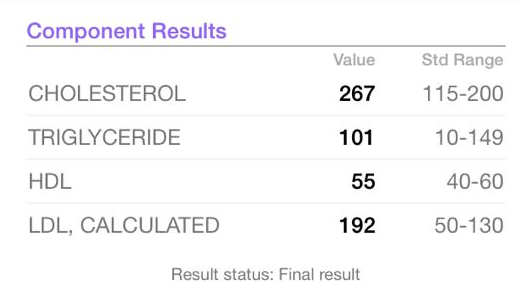
“I was sent to a preventative cardiologist and of course was told I needed a statin. I don’t want to be on drugs, but the doctor said because I have a family history of high cholesterol I didn’t have much of a choice. She, of course, wanted me to go on a low-fat diet and see her back in 3 months.
“I have obviously lost a lot of weight over the last 6 months and I know that, when you lose weight, cholesterol is released from fat cells which can show up in your blood work. Given the brief history I have given to you, do you think I should worry about my cholesterol numbers? I feel 100 times better than I did back in January, but I hate the fact that my cholesterol numbers don’t show how awesome I feel.”
I reassured Tanya that, yes, weight loss will introduce distortions into cholesterol panel values, not due to cholesterol release but to triglyceride and fatty acid release from fat cells that defines weight loss. The flood of triglycerides and fatty acids distort the values that are unreliable during ongoing weight loss and should NOT be used to make long-term decisions. Cholesterol values should only be checked after weight has plateaued for a minimum of 4 weeks.
“The cardiologist wanted to put me on statins, and I told her I wouldn’t. She wasn’t very happy with me, and I went on my way. Well, 4 months after seeing the cardiologist, I had my cholesterol levels checked:
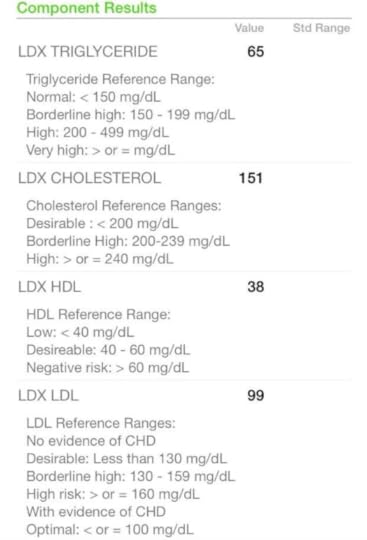
“I know my HDL will go up if I start exercising more, but these numbers are based on eating bacon and eggs EVERY day for the past 15 months. I have a follow-up scheduled with the cardiologist and I can’t wait to see her face when I show her my numbers.”
Tanya accomplished these changes without drugs, without statins, without cutting the fat in her diet. She accomplished this by eliminating wheat and sugar, even though wheat is the cornerstone of every conventional dietary program, including that from the American Heart Association. She did the opposite of their advice and achieved astounding improvements.
Tanya’s HDL is indeed too low, a value associated with increased cardiovascular risk. But this is the last factor to recover after profound weight loss. Along with restoring vitamin D, supplementing omega-3 fatty acids from fish oil, and some other strategies (detailed in Wheat Belly Total Health), Tanya will likely watch her HDL value drift up over time to 50, 60, 70, even 80 mg/dl or more.
Wheat elimination, or even better grain elimination, followed by some simple strategies, can eliminate the “need” for cholesterol reduction using statin drugs in the majority. But why ruin a $23 billion a year party for the drug industry? I’m still looking forward to hearing what Tanya’s cardiologist says about her new numbers.
Let’s start a movement: #SayNOtoStatins. Statins are not necessary for the majority of people if truly effective advice is provided, not the nonsense that passes as nutritional advice to cut fat and eat more “healthy whole grains.” Even when there is an inherited tendency to “high cholesterol,” dramatic improvement in these values is possible by following some simple natural steps.
The post Say “NO” to statins appeared first on Dr. William Davis.
October 7, 2014
A Q&A with Skinny Gut author, Brenda Watson
I asked Brenda Watson, author of the just released new book, The Skinny Gut Diet: Balance Your Digestive System for Permanent Weight Loss, to answer a few questions about bowel health and bowel flora.
Long before probiotics were a household word, Brenda was deeply involved in this world of restoring the bacterial species that co-exist with humans and, when managed properly, provide an unexpected and substantial list of health benefits to the host human. So here are some thoughts from Brenda that give you a sense of the conversations in her Skinny Gut book.
WB: Accepting that nobody knows all the bacterial species that should comprise healthy bowel flora, do you aim to provide several specific species you find crucial in probiotic choices?
BW: Human microbiome studies strongly suggest that the more diverse the microbiota, the healthier the host. Over 10,000 species of bacteria are known to inhabit the human digestive tract, with at least several hundred (up to several thousand) found in any one human. To improve gut bacterial diversity we turn to 1) diet, 2) supplementation, and 3) fecal transplants (in extreme medical circumstances).
Gut bacterial diversity is enhanced by eating foods that contain beneficial microbes (fermented foods) and foods that feed beneficial microbes (prebiotic fibers and resistant starches). Diversity is also enhanced by supplementing with a multi-strain probiotic formula or, in certain medical situations, receiving direct fecal implants under the care of a physician.
When supplementing with probiotics, the key is to choose microbes that are known to be beneficial. Virtually all species of Lactobacillus and Bifidobacterium have been found in human studies to be beneficial. These strains have the strongest record of safety and efficacy. Not only that, but they also exhibit excellent stability when packaged and stored under the right conditions. A probiotic formula containing a diverse array (at least 10) of different strains of Lactobacillus and Bifidoabcterium will best reflect the diversity found in a healthy human digestive tract. Potency is also important, since there are 100 trillion cells inside the digestive tract, outnumbering—by ten times—the number of cells that make up the entire body. Saccharomyces boulardii, a beneficial yeast, is also well known to be an effective probiotic, especially for cases of diarrhea, and is usually taken on its own.
While other beneficial species are found in the healthy human gut, the only way, at this time, to obtain many of these species, is by receiving a fecal transplant. Currently, fecal transplants are only being used in clinical trials and in select clinics for people with severe, refractory C. difficile infections.
WB: In Skinny Gut, you discuss the bowel flora distortions in overweight people at length and how correcting bowel flora can facilitate weight loss. But have you seen the opposite occur: People unable to maintain weight due to distortions of bowel flora? If so, have you approached this situation any differently?
BW: Good question. That could be the next thing we need to look at! I have more commonly been working with people who need to lose weight, so I have not yet had the opportunity to investigate gut imbalance in people who have difficulty gaining weight. It certainly makes sense that if you increased certain bacteria (such as the Firmicutes) in people who are underweight, that they would gain weight.
WB: Can you summarize some of the mental and emotional benefits that people may experience with positive changes in bowel flora?
BW: The gut-brain connection travels in two directions. When we are emotionally upset or under great mental stress, it affects our digestion. It’s fight-or-flight in full effect—digestion shuts down as the body readies itself for the worst. We might experience stomach aches, nausea, or changes in bowel habit (diarrhea, constipation). Also, under stress, our levels of beneficial bacteria go down. In the reverse, when our gut bacteria are out of balance, it can affect our mental and emotional health. With positive changes in bowel flora, improvements in our mental health can occur. Reductions in anxiety and improvements in anxiety-related digestive disturbances, in particular, are experienced.
WB: Thanks for the helpful thoughts, Brenda!
The post A Q&A with Skinny Gut author, Brenda Watson appeared first on Dr. William Davis.
October 3, 2014
The Incredible Shrinking Wheat Belly
Wheat Belly Facebook follower, Kirk, sent these comments along wit an astounding 15-month chronicle of the change in his belly. (Only some of his photos are reproduced for brevity.)
“After my father’s cardiologist recommended Wheat Belly for him to lose weight, (actually he said “Follow this book or die”), I immediately purchased a copy for myself and cut out all wheat. From there my story is like so many thousands of others that you have helped: arthritis gone, weight shed, mind fog, the works.
“I call it the Incredible Shrinking Wheat Belly.”
Kirk is able to demonstrate his shrinking abdominal girth but cannot, of course, show you his relief from joint pain or relief from mind “fog.” So we show you what can be seen, but know that wheat- and grain-elimination accomplish weight loss, yes, but plenty more beyond that.


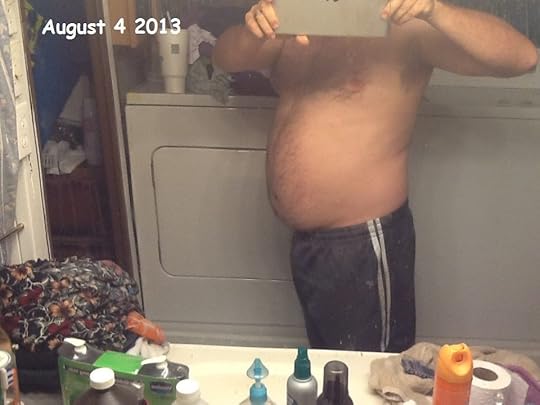

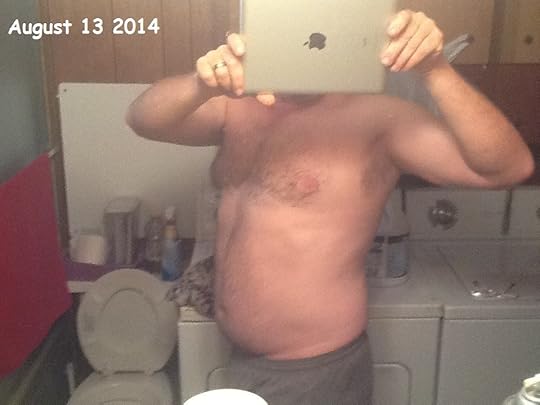
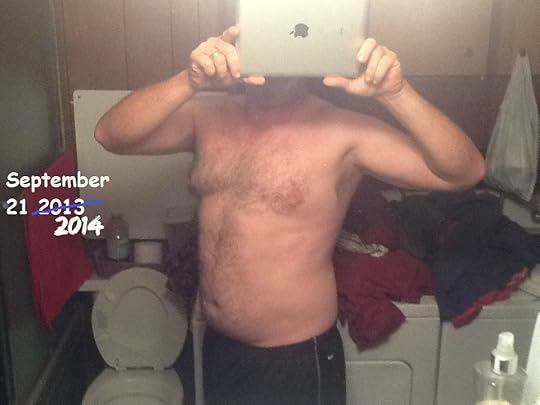
In the last image, Kirk admits to making a typo in the year; this is obviously the end-result of his wonderful efforts.
The post The Incredible Shrinking Wheat Belly appeared first on Dr. William Davis.
September 29, 2014
Brenda Watson’s new Skinny Gut Diet
My friend and long-time bowel health advocate, Brenda Watson, sent me a copy of her new book, The Skinny Gut Diet: Balance Your Digestive System For Permanent Weight Loss.
While the title highlights the diet and weight loss aspect, this new book is really a detailed discussion about the wonderful effects gained by properly managing bowel flora. In addition to insights on how bowel flora impact on weight, she also discusses how it influences brains and emotions, constipation, irritable bowel syndrome, diarrhea, autoimmunity, and other conditions. Here are her comments on the effects of stress on bowel flora:
Most people I meet who are facing health challenges state that they are stressed—stressed at work, stressed with family drama, or stressed with being a caretaker. Stress plays a prominent role in virtually everyone’s life. From endless to-do lists and extended workdays to responsibilities and deadlines at every turn, chronic stress is the norm in modern life. The detrimental effects of stress are often discussed—-poor heart health, emotional upheaval, inability to concentrate, and digestive disruptions—but what you may not have considered is that stress has an effect on the balance of your gut bacteria.
Decreases in the beneficial bacteria Lactobacillus and Bifidobacterium, and increased susceptibility to infections have been demonstrated in animal studies evaluating the effects of stress on the gut. Researchers have also found shifts in the proportions of some gut bacterial species in people experiencing stress from anger or fear. Chronic stress has been found to decrease the abundance of Bacteroides bacteria (generally considered beneficial) and increase Clostridium bacteria (some are potentially pathogenic) along with inflammation.46 And emotional stress can lead to long-term reductions in both Lactobacilli and Bifidobacteria. 47 Recent studies support the role of probiotics in alleviating stress-induced alterations of gut function, particularly by reducing intestinal permeability, or leaky gut, which further highlights the importance of gut bacterial balance for people under stress. Bifidobacteria have also been found to be extremely sensitive to emotional stress as well as stressful physical demands.
In addition to altering the gut bacteria, chronic stress also disturbs the intestinal lining, increasing leaky gut and the amount of bacterial toxins in circulation. Fortunately, probiotics can reverse these effects. In one study, probiotics were found to decrease stress response by preventing the destruction of the intestinal lining and decreasing the amount of circulating bacterial toxins. By rebalancing the gut, the harmful effects of stress can be reversed. Now that’s a stress reliever! By taking probiotics you can lessen the effects of stress on your body and mind.
Brenda has compiled a powerful and comprehensive conversation about how and why it is imperative that you cultivate healthy bowel flora for health. There’s also a helpful and detailed discussion about the proper way to manage probiotics, an issue that Brenda has championed for many years.
The Skinny Gut Diet is scheduled for release October 7, 2014. Nice work, Brenda!
The post Brenda Watson’s new Skinny Gut Diet appeared first on Dr. William Davis.
September 24, 2014
Wheat Belly Total Health on the Dr. Oz Show

Here’s the Wheat Belly Total Health interview on the Dr. Oz Show that aired on September 22nd, 2014.
Although this is my third appearance on his show, I truly felt that Dr. Oz has gotten beyond his initial skepticism. He may become our most vocal advocate!

The post Wheat Belly Total Health on the Dr. Oz Show appeared first on Dr. William Davis.
September 22, 2014
Cut your grass . . . then eat the clippings
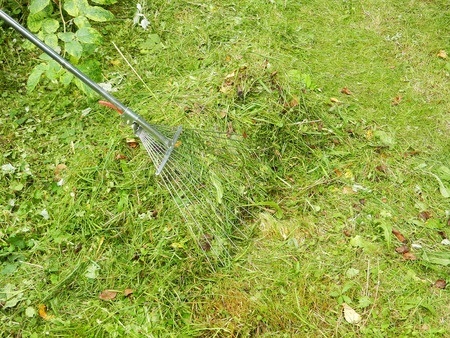
You mow your lawn, then save the clippings to consume on top of your salad, right? Well, why not? It’s green, it’s a plant, just like spinach, kale, chard, and broccoli. Why can’t we eat the green leafy clippings, dowsed with your favorite Ranch dressing or mixed into a casserole and proudly served to your family?
You walk on it and the dog does its duty on it? Oh, and the neighborhood kids take a short cut traipsing through your back yard? Well, why not set aside an area, fenced off to keep it clean, and use those clippings?
Well, let’s say you did and you tossed all those cups and cups of fresh grass clippings all over your salad. What would happen? Well, it causes cramps, abdominal pain, diarrhea and other peculiar effects. Should you pass it out through the usual digestive path, it comes out whole: completely undigested, making a real mess of your nice bathroom. (Modern “experiments” in human grass consumption come from observations of starving populations, such as those in North Korea, who are forced to consume grass and tree bark and become ill.)
Why? Because humans are incapable of digesting the components of grasses. Ruminants, such as cows, sheep, and goats, have evolved the digestive apparatus that allows them to digest grasses–a dental pad to replace upper incisors, continuously growing teeth to replace the enamel abraded by sand-like particles in grasses, the capacity to chew a cud, producing over 100 quarts of saliva per day, a 4-compartment stomach, unique microorganisms in their bowel flora that digest cellulose, a lengthy spiral colon–adaptations that we do not possess. You grow teeth twice over a lifetime, having to make do with a set you last grew during pre-pubertal years, don’t chew a cud, produce a meager one quart of saliva daily, have a tiny, single-compartment stomach and a short colon with only a couple of turns, and have minimal capacity to digest cellulose fibers (explaining why we also cannot eat tree bark).
In short, humans are incapable of digesting grasses, i.e., plants from the biological family Poaceae. Edible plants, such as spinach and broccoli, are not members of this family. (Spinach is from the family Amaranthaceae and broccoli is from the family Brassicaceae.) Grasses that fall under the family Poaceae include rye grass and Kentucky Bluegrass that grace modern lawns–as well as wheat, rye, barley, corn, oats, rice and other “grains.”
You probably don’t think of grains, such as those in a bagel or taco, as grasses, since they don’t look green and leafy. That’s because grains are produced from the seeds of grasses. Because we are total incapable of digesting the leaves, stalk, roots, or husk of grasses, we resort to consuming the seeds alone. Even then, however, extensive processing is required to try and make them digestible: drying, pulverizing, reconstituting with water, brewing, or baking with wheat flour, for instance. Corn doesn’t look like a grass because the cob is really a mutated seed head, a grotesque mutation of the original teosinte or maize that, if you saw it, is indistinguishable from any other grass, no huge cob in sight. Despite these efforts, most of the components of the seeds of grasses, as with the rest of the grass plant, remain indigestible. It means that proteins like wheat germ agglutinin, WGA, (in wheat, rye, barley, and rice) are untouched by the process of human digestion, and prolamin proteins, such as gliadin in wheat, secalin in rye, hordein in barley, zein in corn, avenin in oats, and kafirin in sorghum, are likewise either completely undigestible or only partially digestible (i.e., not broken down into single amino acids, as we do with, say, egg or meat proteins). Undigested WGA exerts peculiar gastrointestinal and inflammatory effects in its passage through the human digestive system, such as blocking gallbladder and pancreatic function and exerting direct toxic effects on intestinal tissue. Undigested gliadin is the first step in triggering autoimmunity, while partially-digested gliadin fragments act as peptides that have opiate-like effects on the human brain, effects that include appetite-stimulation and paranoia. It is therefore the indigestible nature of grasses that explains why so many unexpected and peculiar effects develop when humans try to consume the seeds of grasses.
Surely smart food scientists, dietitians, and people in agriculture such as those in the USDA, acknowledge the problematic nature of the human consumption of grasses–but they don’t. Instead, they say “eat all you can every day at every meal” through the U.S. Dietary Guidelines and other instruments. This advice is therefore not just wrong for our species; it is devastating with results that include obesity, diabetes, autoimmune diseases, psychiatric illness such as depression, eating disorders, skin rashes, seizures and other forms of neurological disruption, dementia, gastrointestinal cancers, hypertension, and heart disease–to name a few.
More on this line of thinking can be found in my new book, Wheat Belly Total Health, including the steps you need to take to fully unwind all the health-disruptive effects of years of being wrongly and tragically told to eat the seeds of grasses.
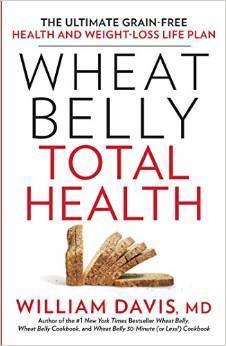
The post Cut your grass . . . then eat the clippings appeared first on Dr. William Davis.
September 16, 2014
Wheat Belly Total Health now in bookstores!
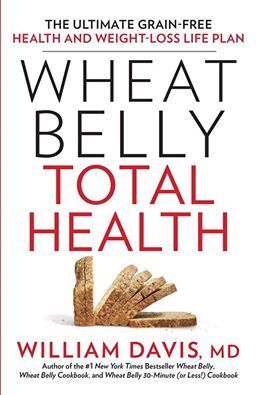 Wheat Belly Total Health
Wheat Belly Total HealthThe new Wheat Belly Total Health is now available at all major bookstores!
Wheat Belly got the conversation started, indicting modern semidwarf wheat as the cause for an unexpected and frightening list of health conditions. That insight alone is changing nutritional thinking everywhere. But just removing this awful creation of genetics research can leave many residual health problems in its wake.
This explains why, for instance, someone with rheumatoid arthritis feels 70-80% better with wheat elimination, but still experiences occasional low-grade flare-ups. Or why a diabetic can get off insulin but remains one or two oral drugs. Or why psoriasis is less prominent, less itchy, but does not fully disappear. Or why someone lost, say, 40 pounds, but then hits a weight plateau with another 50 pounds to go. Or why someone remains on a statin cholesterol drug or blood pressure drug(s) with less than perfect numbers. It means that not all problems initiated by wheat reverse because there are additional steps to take.
The good news: Understand these additional steps and you maximize the likelihood of reversing such stubborn or residual health issues. People with autoimmune conditions maximize the likelihood of full reversal, people with diabetes maximize likelihood of becoming non-diabetic, people with psoriasis and other rashes maximize the chance that they finally disappear from sight, people on statin drugs and blood pressure drugs maximize hope of getting off their drugs entirely with values better than on the drugs.
Wheat Belly Total Health is a celebration of individual self-empowerment in health!
Read Jimmy Moore’s review of the book here.
Wheat Belly Total Health is available at:
Amazon
Barnes & Noble
IndieBound
The post Wheat Belly Total Health now in bookstores! appeared first on Dr. William Davis.
September 15, 2014
Wheat Belly Total Health on Dr. Oz!

Dr. Oz recognizes that the Wheat Belly movement has helped shatter the “healthy whole grain” fiction responsible for a nationwide epidemic of health problems and weight gain. On the Dr. Oz show episode airing on September 17th, 2014, we provide an overview of the Wheat Belly message: Why modern wheat created by geneticists is such a destructive food, why and how other grains overlap with similar effects, and how to pick and choose safe, healthy foods.
Wheat and grain elimination is a powerful strategy for regaining health and losing weight . . . but there is more to do to completely reverse unhealthy effects accumulated over many years of grain consumption, such as reverse autoimmune diseases, joint pain, break weight plateaus, maximize your chances of a full reversal of diabetes and pre-diabetes, reduce heart disease risk without statins, etc. We therefore also introduce the new book, Wheat Belly Total Health that takes the discussion even further than the original Wheat Belly and stacks the odds in your favor of achieving a complete return to vigorous health and weight.
The post Wheat Belly Total Health on Dr. Oz! appeared first on Dr. William Davis.
September 10, 2014
Wheat: It’s WORSE than GMO
It’s a common ploy used in industries under attack: Throw out a provable fact and repeat that fact over and over again, and hope that the real accusations never get heard. While such tactics rarely yield long-term success, it is a method of damage control that delays the inevitable decline that such attacks bring.
The grain industry has been employing this tactic, as recently shown in this article from The Gazette: “Speakers [from the grain industry] addressed consumers’ belief that wheat is a GMO (genetically modified organism) crop. ‘It’s a myth,’ said Brett Carver, wheat genetics chair in agriculture at Oklahoma State University.
“GMO generally means introducing a gene from a different source – foreign DNA. That’s where the train leaves the tracks. All breeding (in the United States) is done at colleges, where we work inside the natural genetic boundaries. There is no GMO wheat grown in the U.S.”
Okay, so in their line of thinking, if wheat is not genetically-modified, non-GMO, it must therefore be okay. Let’s take a look at the work of Dr. Peter Shewry, one of the world’s leading experts in wheat and grain breeding at the University of Reading in the U.K.
In a May, 2014 study published in the Journal of Cereal Science, Dr. Shewry and colleagues state that:
Mutation breeding, which is based on the use of radiation or chemical agents to induce mutations, has proved to be very effective in generating novel genetic diversity for important traits that has been exploited in breeding programmes. This has resulted in the production of 3218 different crop cultivars with economic and social benefits. More recently, the availability of large genomic resources and bioinformatic tools together with new sophisticated technologies to detect mutations in target genes have led to the development of a technology termed TILLING (Targeting Induced Local Lesions in Genomes). This approach combines classical chemical mutagenesis and PCR-based screening to identify mutations in a given gene of interest. TILLING involves the use of chemical agents such as sodium azide (NaN3) or ethyl methane sulfonate (EMS) which are able to alkylate nucleotides to induce point mutations which are randomly distributed over the entire genome. EMS alkylates guanine bases that will then pair with thymine instead of cytosine, ultimately resulting in a G/C to A/T transition. Different high-throughput technologies are available for mutation detection. Treatment of seeds with EMS is very effective in producing nonsense, missense and silent mutations. {Emphasis mine]
So wheat is not “genetically-modified,” meaning no gene-splicing technology was used to insert or delete a gene, but “mutation breeding,” or mutagenesis, is alive and well, able to induce mutations through the entire genome. Genetic-modification introduces only a handful of changes, while the methods of mutation breeding introduce mutations throughout the entire genetic code of a plant.
So don’t fall for this common tactic employed by industries under attack, the smokescreen that diverts attention away from the truth. No, wheat is not a GMO plant and I never said it was. Wheat has been subjected to methods that are worse than genetic-modification.
The post Wheat: It’s WORSE than GMO appeared first on Dr. William Davis.
Dr. Davis Infinite Health Blog
Recognize that this i The insights and strategies you can learn about in Dr. Davis' Infinite Health Blog are those that you can put to work to regain magnificent health, slenderness, and youthfulness.
Recognize that this is NOT what your doctor or the healthcare system provides, as they are mostly interested in dispensing pharmaceuticals and procedures to generate revenues. The healthcare INDUSTRY is not concerned with health--you must therefore take the reins yourself.
Dr. Davis focuses on:
--Real, powerful nutritional strategies
--Addresing nutrient deficiencies unique to modern lifestyles
--Deep insights into rebuilding the microbiome disrupted by so many modern factors
Follow Dr. Davis here and on social media and you can witness the extraordinary successes people enjoy on his programs. ...more
- William Davis's profile
- 159 followers



